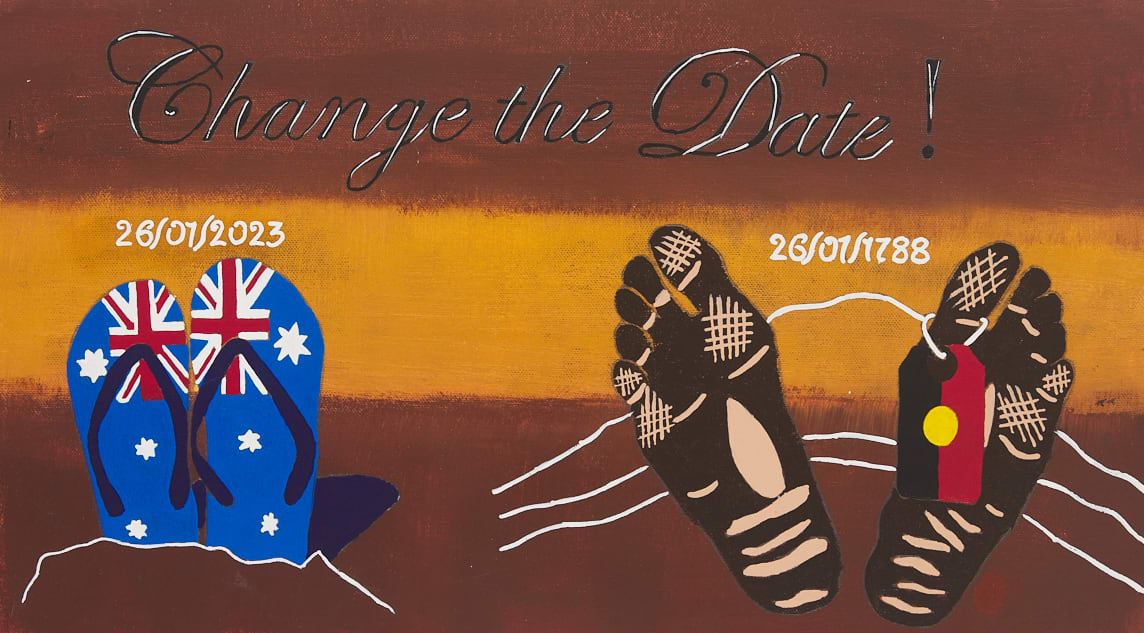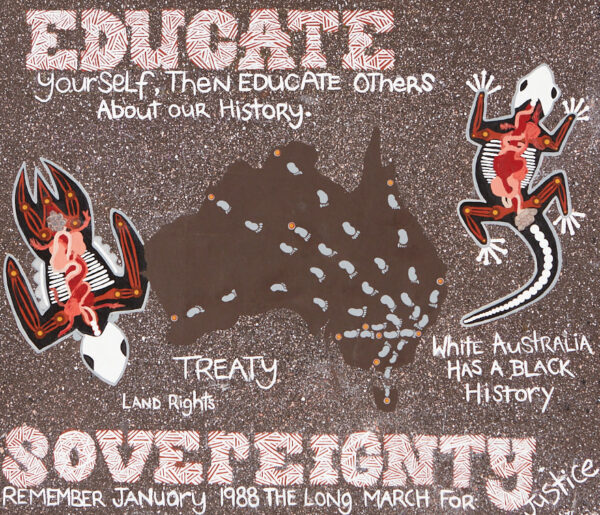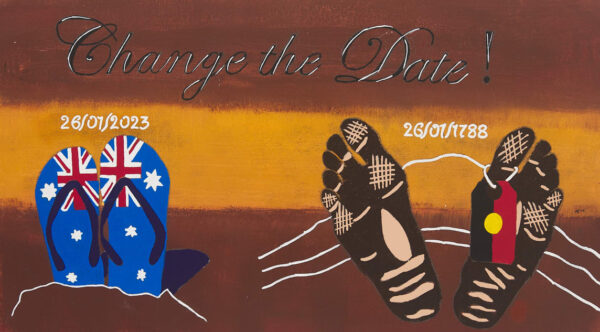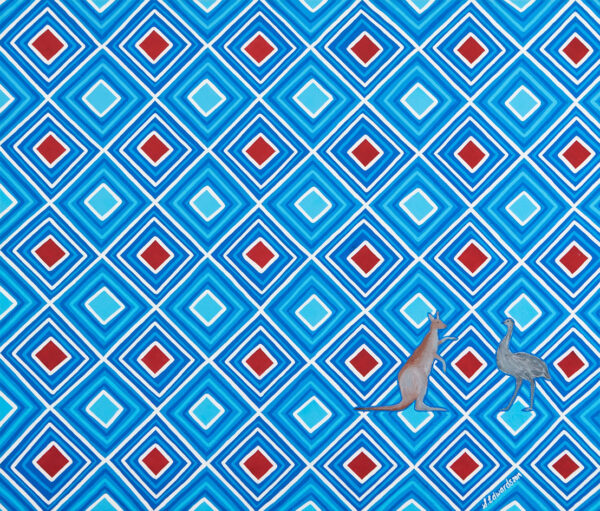
The 26th of January 1788, is the date Arthur Phillip led the First Fleet into what is now known as Sydney Cove in NSW. He raised a British flag on the land of the Gadigal people of the Eora Nation to proclaim British Sovereignty. The date marks the beginning of an unnecessary and brutal colonisation which led to the violent loss of freedom, sovereignty, Country, and in so many instances, family and culture for First Nations Australians. It also began the ongoing, systemic and racially discriminatory process of the criminalisation of First Nations people as part of that colonisation.
The Torch board and staff, and the artists experiencing incarceration connected to The Torch program work everyday to address and raise awareness of the continuing overrepresentation of First Nations people in the criminal justice system. Collectively, and in partnership with a broad range of growing supporters, we are creating change slowly but surely, as is so often the case for Indigenous rights and equality in this country.
The Torch proudly supports the voices of artists with lived experience of incarceration to add their insights to the ongoing debate surrounding the 26th of January as a date to celebrate. Australia Day, Invasion Day, a Day of Mourning, Survival Day – maybe there’s a better day for us to engage, discuss and celebrate. May 27 is a date that springs to mind. On that day in 1967, 90% of Australians voted to change the Australian Constitution so that Aboriginal and Torres Strait Islander peoples would be counted as part of the population, and that discriminatory references would also be removed.
Regardless of the date, the work of The Torch and so many First Nations organisations around the country continues everyday.

1. “1988 Australia Day: Educate Yourself to Educate Others”
This painting is to remind us that we have a past that many people don’t know about and that many have forgotten. In 1988 a large number of Aboriginal people converged in Sydney in convoys from all over Australia to protest the reenactment of the First Fleet. The protest grew along the way to over 40,000 people. It was the largest protest in Sydney since the Vietnam War. This painting is to remind people that White Australia has a black history. Aboriginal people must realise that our biggest asset is our unity! I had to educate my self to educate others about the murder, massacre, dispossession, slavery and attempted genocide of the Indigenous people of this land. Today the march is still remembered as a day of hope and empowerment — it’s success still brings pride today!
– Will H (Wiradjuri people)

2. “Change the Date”
This is for all the horrors our Ancestors endured and the sadness behind the day Indigenous people were invaded. It shouldn’t be a day we celebrate; it should be a day where we recognise the wrong doing and sheer torture our people were put through. ‘Change the Date’ as a piece is just a small step on a long road to solving the racism in Australia today. Sometimes ‘sorry’ just isn’t enough, make actions to prove it cause they say actions speak louder than words but paintings are the loudest.
– T.G. Mitchell (Barkindji people)

3. “We Will Not Assimilate”
Invasion happened almost 200 years ago in Victoria. White Australia policies tried to “breed the black” out of us. As much as the Commonwealth try to assimilate us, our culture still comes through strong.
– Stacey Edwards (Taungurung/Boonwurrung peoples)